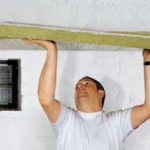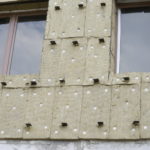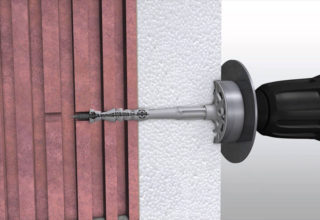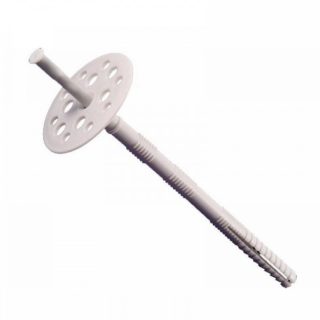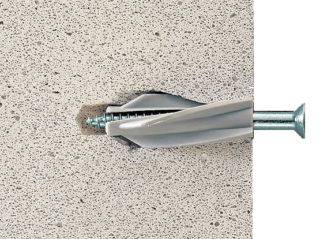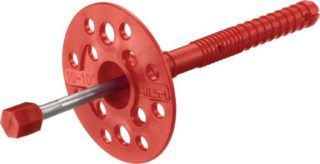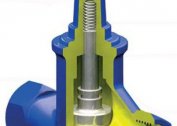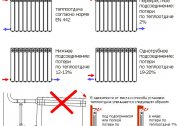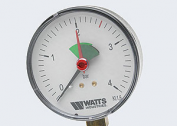During construction and finishing works, various fasteners are used: nails, staples, self-tapping screws. With their help, boards and insulation materials are fixed. The main type of insulation retainers are dowels, but can also use glue or laying between rafters. Various materials and fasteners are used to isolate surfaces of different purposes (piping, facades, walls, foundation). Before starting work, you need to figure out which type is suitable for specific conditions.
The main methods of fastening insulation
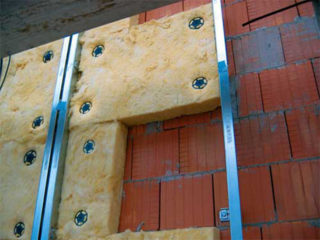
The method of fixing the insulation depends on its structure and the surface on which the material is installed. Soft heat insulators are conveniently fastened with a battens. On concrete and brick walls, the insulation is fixed with dowels and glue.
Lathing
This method is used for laying soft insulation (mineral wool). A frame is created from the bars, which are located at a distance equal to or slightly less than the width of the thermal insulation. As a result, cells are obtained in which the plates are laid.
The most common area of application is the insulation of internal walls, floors, roofs and ceilings. It is used outdoors when it is necessary to make a ventilated facade. The frame in this case is made of a metal profile. If the cladding is in the form of a wet facade, this method is not suitable. A soft heat insulator will not support the weight of the facing plaster layer.
Fixing on dowels and nails
The insulation is fixed on a hard surface with dowels and nails. There are three types of dowels - plastic, with a metal nail and a metal nail with a thermal head.
When choosing heat-insulating clips, it is important to choose their size. In the case of attaching thermal insulation to a brick wall, the length of the holder should be 70 mm longer than the thickness of the insulation plate. Plastic products are used if the maximum length does not exceed 120 mm.
Glue fixing
This method is optional. To install insulation, there are a large number of adhesive bases. They have minimal differences, but it is important to ensure that the glue fits the specific type of heat insulator and surface. When working, it is important to look at the composition. It should not be coarse. If the glue has such a consistency, one can judge the improper storage and unsuitability for work. Suitable for installing foam on walls.
- Adhesive mount
- Dowel mount
Plate mount
The dowels that are used to install insulation have a specific shape. They are also called fungi or umbrellas. The clips allow you to securely fasten even the most fragile material. With their help, you can attach thermal insulation to concrete, stone, brick.
The positive sides of the plate mount:
- A reliable fit to the surface, which is provided by a wide cap of the fungus.
- Exposure to significant loads.
- A rough part is made on the surface of the cap to improve grip.
- Corrosion resistance.
- They are made of inexpensive plastic with good characteristics.
- Does not damage the seal. An umbrella is a folding element.
- Strengthening the design of the latch due to the expansion of the dowel in all directions.
The dowel mushroom itself can be made of plastic or steel.The choice of this or that material depends on what insulation will be laid on the surface. There are differences in configuration and workmanship.
Plastic fasteners
Plastic holders are the cheapest, while their quality does not get worse. On the surface of the umbrella there are holes in the form of cones for additional grip. To install non-solid materials, use nylon fasteners made of high quality polypropylene.
Features of plastic fungi:
- Low cost due to the simplicity and low cost of production.
- Do not respond to temperature jumps.
- Low thermal conductivity.
- Ability to work in harsh conditions.
- Do not rot and do not rust.
- Able to withstand a load of 400 kg / sq.m.
Such products are actively used to install insulation on brick and concrete surfaces.
Metal fasteners
The fastening nail is made of steel. The sleeve is made of polypropylene with spacers located at the end. This design allows you to increase the degree of load. The main area of use is the arrangement of building facades. Among the shortcomings can be identified:
- The high cost of products.
- Risk of rust on contact with water.
- The appearance of condensation.
Do not use metal products in rooms with high humidity.
Thermal head fasteners
The device is a metal rod, in which the cap is coated with polyamide. Thanks to this tip, the problem of condensation is solved, which is why rust does not form on the plaster.
Scope - wooden houses. The main disadvantage is that models with a thermal head are the most expensive in this segment.
Thermal insulation with fungal fasteners
The technology of installing thermal insulation using a dowel-fungus does not cause special difficulties for the master. It is important to prepare the necessary tools in advance before attaching the insulation to the concrete wall.
For installation, you will need a bucket, a drill with a whisk, a spatula for applying the composition to the wall and a punch with a drill of a diameter suitable for the dowel.
The mineral wool is not fastened to the wall with fungi, since such thermal insulation does not need additional fixation. Suitable for fixing foam, foam, polyurethane foam and other solid materials.
Step-by-step instructions for fixing the insulation:
- Surface cleaning. The material will be securely fastened only on a flat surface without cracks and protrusions.
- Vapor barrier. In addition to its main purpose, this layer will perform the function of additional fastening.
- The area of the insulation must be marked for drilling holes. The pitch is 0.8 m horizontally and 0.3 m vertically.
- Punching holes for dowels. The diameter should be equal to the cross section of the legs of the fastener.
- Manually installing the sleeve into the hole. The core must be placed in the sleeve and hammered to the stop. The umbrella should be opened with a special protective cover.
So that the insulation does not slip, put a guide bar on the bottom of the wall. In the case of additional fixation to the glue, the fungi are installed after the composition has completely dried.
It is important to be able to choose the right number of clips. This can be done by the formula:W = S * Qwhere W - number of dowels, S - coverage area Q - number of dowels per meter. For 1 meter foam, 4 holders are needed, for basalt wool, this value is 6. It is recommended to buy a little more products so that there is stock.
Examples of fastening different materials
Polyfoam and mineral wool are some of the most famous and used heat insulators. Their scope is wide - from the surfaces inside the house to the foundation and pipes.On their example, the fastening of the insulation to the wall will be considered.
For foam insulation, you should choose a material with a width of at least 100 mm. If this is not the case, you can take two layers of 50 mm and lay in two rows. To work faster, the width of the insulation must match the location of the rafters. The installation of the foam is carried out using a mounting foam or glue. With a dense installation to the walls of the rafters, foam can only be glued at least at the joints. If plastering will be carried out, you will need to use the double cladding method. When laying in two layers, it is important to half-shift the slabs of the new row relative to the previous one. This will reduce the number of joints through which heat can escape. Before installation, be sure to put waterproofing. As an additional fixer, a board or rail is used, on which later finishing finishing material is laid on top.
Material in rolls or slabs is great for attaching insulation to the bottom of the ceiling. In this case, the laying of coiled mineral wool is straightforward. It is easy to cut into plates of the right size and place between the lags. The cut piece should be approximately 4 cm larger than the distance between the beams. The resulting strips are put in cells. Additional fastening of the insulation to the wall with fungi is not required. If desired, the mineral wool can be additionally fixed on nails of small diameter and twine. Nails are driven into logs at a distance of 0.5 m, a thread is pulled on them, which holds the thermal insulation. In this case, the insulation fasteners will be more reliable.
